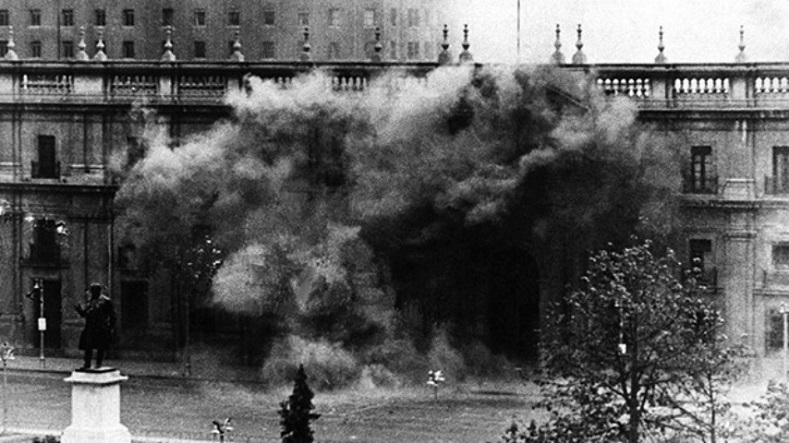By Brandon Moran and Oscar Castillo
Many associate 9/11 with the collapse of the twin towers, but for Chileans, 9/11 marks a day of abrupt political turmoil. On Sept. 11, 1973, the Chilean presidential palace, or La Moneda, was bombed by a military coup led by General Augusto Pinochet. Then-president Salvador Allende was the first democratically-elected socialist president in Latin America and his victory marks a unique case study for Latin American politics. Allende was so committed to his people that he neglected to give in to General Pinochet. Instead, Allende committed suicide with an AK-47 which happened to be a gift from Fidel Castro.
Allende’s presidency promised a peaceful revolution to redistribute wealth and expand social policies. Unfortunately, the United States viewed him as a potential communist threat. Despite his principles of equality and protection of the poor class, the United States covertly intervened and supported the brutal dictator Pinochet. Chile would suffer from a military dictatorship from 1973-1990, with thousands of innocent citizens being executed.
As General Pinochet rose to power, government forces like la Junta, the military force, and los Carabineros, the national police, placed restrictions on all citizens, especially those affiliated with left-wing political ideas. In fact, a tremendous number of men were tortured, killed and disappeared at the hands of the Pinochet government. While it was mostly men that disappeared, many women disappeared as well. Those most affected were in the lower classes, as jobs were lost, lands were stolen and human rights were violated. Any form of political protest was highly restricted. One form of political protest included patch-making.
Recently, the Brush Gallery held an exhibition that displayed tapestries of various scenes from the coup. Many women put their sorrow and grief into capturing patchworks.
Arpilleras, which translates to “burlap” in English, were patchworks that served to depict the atrocities and struggles that happened under the Chilean dictatorship. Arpilleras were mostly made by working-class women as they were one of, if not the only, sources of income for families.
Because Arpilleras were prohibited, they could not be sold locally, but abroad to human rights organizations. In this way, Arpilleras served as messages that communicated to the world what was happening in Chile.
Finally, it is unclear of how these patchworks surged, but it is clear that Arpilleras did not originate during the dictatorship. In fact, during the 1950s and ’60s, the famous Chilean folk musician Violeta Parra was making Arpilleras depicting political and musical themes.
As students, we should be informed about how the United States has directly and indirectly influenced the development of countries across the Western Hemisphere. Unfortunately, most SLU students probably never studied the U.S. interventions in Latin America.
Historical Amnesia is one consequence of us being unaware of the responsibility we have in disrupting organic democracy. I appreciate how the Brush Gallery could shed some light on the atrocities experienced on September 11, but we should continue to reflect on the copious amounts of interventions throughout the Americas.



